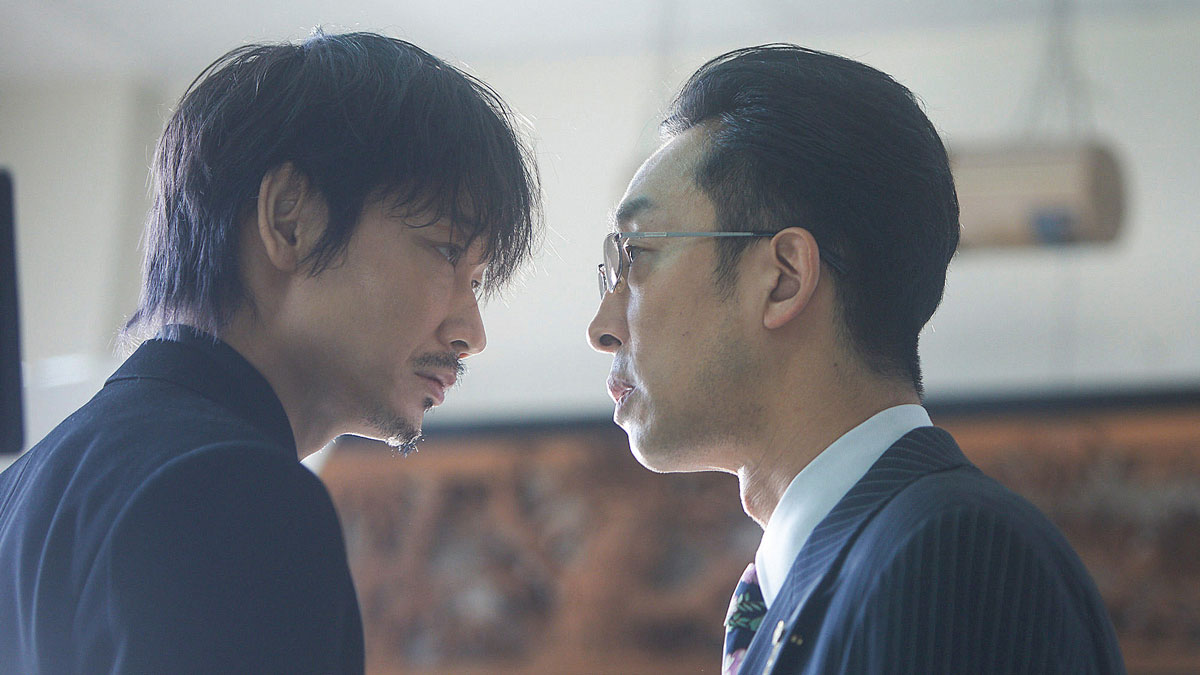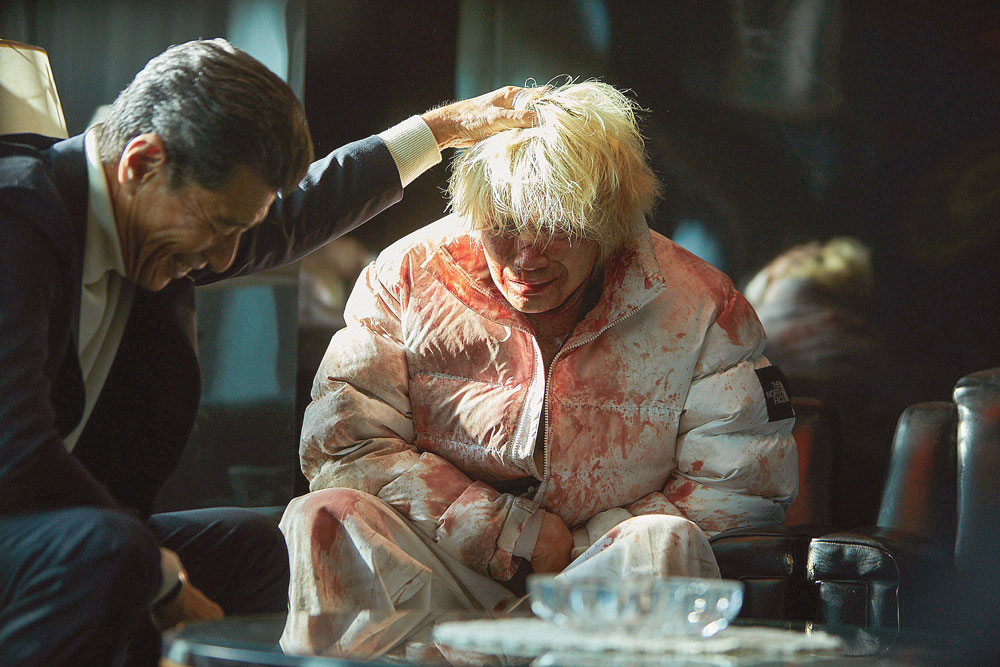
(c)2021 “Yakuza and the Family” Production Committee
“Yakuza and the Family” An unwavering bond in changing times. Michito Fujii's achievements in 10 years as a director
2021.01.30
“Yakuza and the Family” synopsis
19-year-old Kenji Yamamoto (Tsuyoshi Ayano) wears flashy blonde hair and white tops and bottoms. His father, a stockbroker, lost his life to stimulants after the bubble burst, and his mother has also passed away. Yamamoto, who has no family, lives a hand-to-mouth life with his bad friends Hosono (Hayato Ichihara) and Ohara (Ryutaro Ninomiya). One day, while drinking at his favorite restaurant, Yamamoto saves Shibasaki Hiroshi (Tate Hiroshi), the head of the Shibasaki group, from an attack by thugs. This was how the two met.
Index
- A perfect blend of yakuza and social films.
- A film that matches the “beliefs” of Star Sands and Director Fujii
- A counter to the modern era where the Yakuza are treated as “devices”
- Works depicting “yakuza” and “law” are thriving
- The challenge of having one actor perform 20 years' worth of roles
- Precise screen design with a visual theme of “smoke”
A perfect blend of yakuza and social films.
I wonder if the concept of ``yakuza'' that we Japanese people, or perhaps people all over the world, had will be completely changed after this work. ``Yakuza and the Family'' (released on January 29, 2021), which is the culmination of Michito Fujii's 10-year career as a film director, is an ambitious film with great potential.
This work is a saga centered on three eras: 1999, 2005, and 2019, depicting the heroic life of a man who stepped into the world of Yakuza. Yamamoto (Tsuyoshi Ayano) is a young man whose father, a stockbroker, became addicted to stimulants and died, leaving him alone for the rest of his life. Filled with anger that has no place to go, he and his bad friends attack a stimulant drug dealer and come into contact with the wrath of the local extremist yakuza group, the Kyouhakai. Yamamoto and his friends are abducted by members of the Kyouhakai, and are punched and kicked until their faces swell, and they feel like insects' breath.
However, at that time, the Shibasaki group's business card, which they happen to have, saves their lives. Yamamoto had previously saved Shibasaki-gumi leader Hiroshi Shibasaki (Hiroshi Tate) from thugs at a restaurant he frequented, and had received his business card. Shibasaki welcomes Yamamoto in a battered state, understands his hatred for the yakuza that killed his father, and suggests the following. “Are we going to become a family?” Thus, Yamamoto meets his new "father" and begins his second life as a yakuza.

“Yakuza and the Family” (c)2021 “Yakuza and the Family” Production Committee
This is a very brief summary of Chapter 1 (1999). The film then moves on to Chapter 2 (2005), when the Yakuza were at their peak, and Chapter 3 (2019), when the Yakuza were weakened due to the enforcement of the anti-organized crime law. Where do the "families" go who have been despised as "anti-social forces" and have been forced out of their positions to the point where they can't even smoothly sign a mobile phone contract or open a bank account?
The main focus of this work is probably Chapter 3. Yamamoto's life as a yakuza depicted in Chapters 1 and 2 is a run-up and a catalyst for Chapter 3. The more touching the drama between the father and son with Shibasaki is, and the more Yamamoto awakens as a yakuza, the more brutal the aftermath becomes. How will the yakuza, whose human rights have been stripped away over time, survive? This can be said to be the true essence of director Fujii and production/distribution company Star Sands, who have continued to weave stories rooted in "society" from different vectors.
However, what is really interesting about ``Yakuza and the Family'' is that it does not consume Chapters 1 and 2 as ``stuff'', nor does it keep throwing out ``problems'' in Chapter 3. In the end, the two tones of a yakuza film and a social film are blended together, leading to a spectacular finale. The point is that, while incorporating realistic elements, the film is designed to give you a clear sense of catharsis at the end.
Chapter 3 is heavier in terms of weight, but the last part has a strange structure that adds the essence of Chapters 1 and 2. This is very effective, and the story does not feel preachy, but it does not become a ridiculous story either. Highly fictional entertainment, documentary that records facts... It doesn't give in to either of those things, but it doesn't leave the viewer alone as someone else. Without looking away, we are presented with a story that connects us to society, all the way to zero distance. It's truly a terrifying piece of work. The skills of Director Fujii and the rest of the team, who were able to achieve a miraculous balance, are astounding.
A film that matches the “beliefs” of Star Sands and Director Fujii

